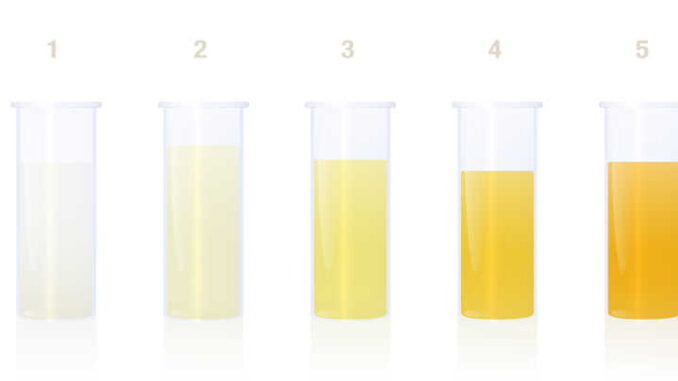
This article was updated on February 1st, 2024

You might know that a dog’s poop color can change based on their diet, but it’s also true that their urine color can frequently vary too. While we’re normally worried about dark or bloody urine, the opposite end of clear urine can be alarming as well: if clear urine persists for more than a day or two, it may indicate an underlying medical condition, such as diabetes or kidney disease.
In this article, our experienced veterinarian Dr. Chyrle Bonk explains why your dog’s urine may be clear, if it is a cause for concern, and what can be done about it.
“Peeing clear for more than a day or two could indicate that something more serious than drinking too much is going on.”
When Clear Pee is NOT a Concern in Dogs
A dog’s urine is a concoction of water and waste products. The color of it can be affected by how much water a dog is drinking, or not drinking, and how many waste products the kidney concentrates into it.
Normal, healthy dog urine should be a pale yellow, as shown on the picture below:
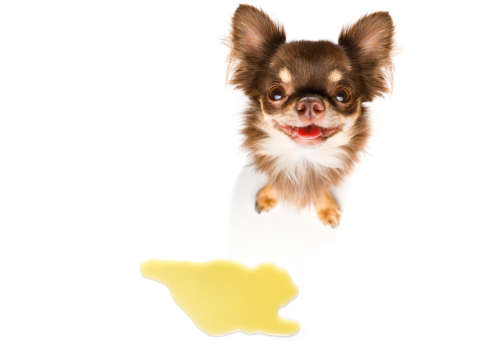
You may hear your veterinarian say ‘straw-colored.’ This means that they are taking in enough water and that the kidneys are doing their job to concentrate it sufficiently with waste products. There may be some variation in what a normal color between dogs is, so it’s important to have an idea of what your dog’s normal healthy urine color is.
Now, if your dog happens to have a lighter than normal colored pee, say clear or nearly clear, it can just mean that:
- they are overly hydrated, or that they took a few too many water breaks that day.
- they normally have lighter-colored pee than other dogs.
“If you notice a clear stream once or twice with no other signs, chances are your dog is fine.”
When is Clear Pee a Concern in Dogs
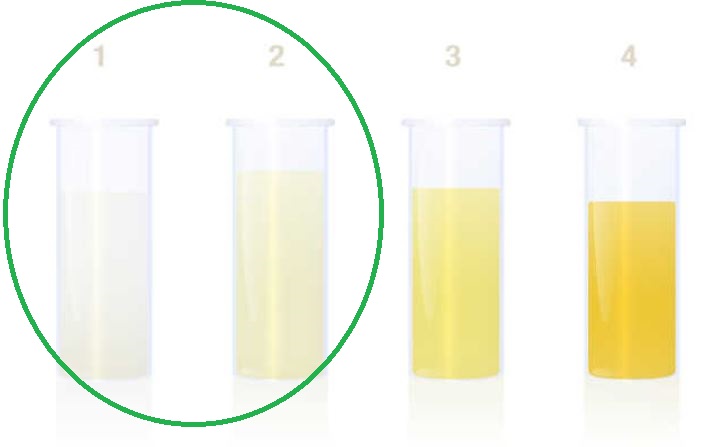
One or two ‘off’ colored pees usually don’t mean much, but if your dog starts making a habit of having clear pee, you may want to consult your veterinarian. For example when:
- Your dog’s pee appears clear for more than a day or two, or
- You notice other signs of illness, including vomiting, not eating, drinking a lot, or losing weight.
Top Causes of Clear Pee in Dogs
If you’ve started noticing that your dog’s pee is consistently taking on a clear color, it may be due to any of the following reasons. If this lighter urine is something new in your dog or if they are showing any other signs, be sure to contact your veterinarian.
1. Increased Water Consumption
When dogs drink more water, they need more frequent bathroom breaks, often resulting in clear urine. This can happen for various normal reasons, such as hot weather, more exercise, or switching to dry food. These changes are often temporary, and the dog should show no other signs of illness.
However, excessive water consumption can also indicate health issues. For example, Diabetes or Cushing’s disease can cause dogs to drink more. We’ll go through these health issues in the paragraphs below.
2. Diabetes Mellitus / Insipidus
Diabetes Insipidus: f you knew there was a type of diabetes called diabetes insipidus, you’re way ahead of the game! This is a rare disease in dogs where a dog’s body either doesn’t make enough or doesn’t react properly to hormonal water regulation. Instead, their body asks for more and more water, even if they don’t need it.
Symptoms: excessive thirst and drinking, high volumes of dilute, clear-colored urine.
Diabetes mellitus, on the other hand, is the one most people are familiar with. It can also cause clear-colored urine as a dog’s body tries to dilute out the high concentrations of blood sugar by adding water.
Symptoms: increased thirst and urination. Dogs may also not eat, lose weight, and have bad breath.
3. Kidney Failure
In simple terms, the kidney’s job is to remove excess water and waste products from the body. They can increase or decrease the concentration of the urine based on the amount of water and waste products that need to leave.
However, as kidneys age or if they are damaged, such as with kidney disease, their ability to do that decreases. Instead of being able to pack a whole lot of waste into a small amount of water, they start to put smaller and smaller amounts in there. This leads to lighter-colored urine, increased water consumption, even nausea, vomiting, not eating, and weight loss.
4. Other Causes
Heart failure, Cushing’s disease, changes in a dog’s electrolyte balance, and others can also cause clear pee. Each of these can lead to increased water excretion from the body, diluting the urine. Look also for any of the following signs that could help your vet diagnose the issue:
- increased drinking,
- increased appetite,
- coughing,
- exercise intolerance,
- changes in behavior,
- weight loss, or
- any other signs of illness.
Treatments for Clear Pee in Dogs
If your dog’s lighter or clear pee has become consistent, it’s time to look at how you can, well, ‘clear’ it up.
At-Home Treatments for Clear Dog Pee
If your pup isn’t showing any other signs other than clear or lighter-colored urine, you may choose to monitor them for a day or two and see if things change. Again, seeing clear pee on one or two trips outside shouldn’t be too much of an alarm, especially if everything else seems right with your dog.
How Do I Know If My Dog “Drinks A Lot”? Excessive thirst is one of the symptoms to monitor if your dog has clear pee. As a point of reference, dogs normally drink about one ounce of water per pound of body weight per day. This means that a 10-pound dog should drink about 10 ounces of water.
You can use these guidelines to measure how much your dog is drinking to determine if it’s excessive or not. Keep in mind that every dog is different, and some variation is normal.
How to Figure It Out: Start by Taking a Urine Sample with You to the Vet
If your dog’s clear pee doesn’t darken up in a day or two or they start showing other concerning signs, be sure to contact your vet. Diagnosing causes of clear pee is going to start with, you guessed it, a urine sample. If you’re able to catch one in a clean container, your vet will thank you.
Your vet may also run some blood tests to check blood sugar levels, hormonal responses, and organ function as well.
From there, they’ll look to start treatment. The cost of these treatments is going to vary widely based on the cause. Most of these issues will need lifelong treatment and monitoring and can get very expensive in the long run.
FAQ with Dr. Chyrle Bonk
Can clear pee in dogs be a good sign?
The normal color of a dog’s pee is light yellow to nearly clear. It may be normal for some dogs to run on the clearer side, depending on their hydration status. If you notice that your dog’s pee is clearer than usual, watch them for other signs as well as for the color to return to normal.
Could clear pee mean my dog has a UTI?
UTIs are usually characterized by more frequent pee breaks, urinating small amounts, or foul-smelling or cloudy urine. Clear urine is more often caused by drinking more water or by the kidneys failing to concentrate pee successfully. Learn more about Male Dog UTIs / Female Dog UTIs.
What color should my dog’s pee be?
The normal, healthy color for most dogs’ pee is light yellow, straw-colored, pale gold, or clear yellow-you can choose the phrase you like best. Very dilute or clear pee, as well as very dark yellow, red, or brown pee, should be checked out by a vet. See our dog pee color chart.
Related posts:
Disclaimer: This website's content is not a substitute for veterinary care. Always consult with your veterinarian for healthcare decisions. Read More.



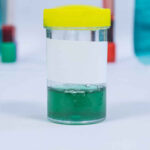




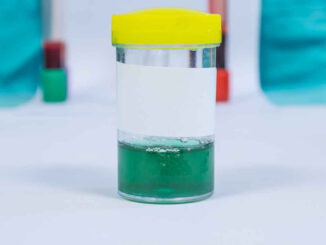
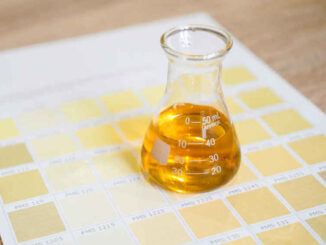
Be the first to comment